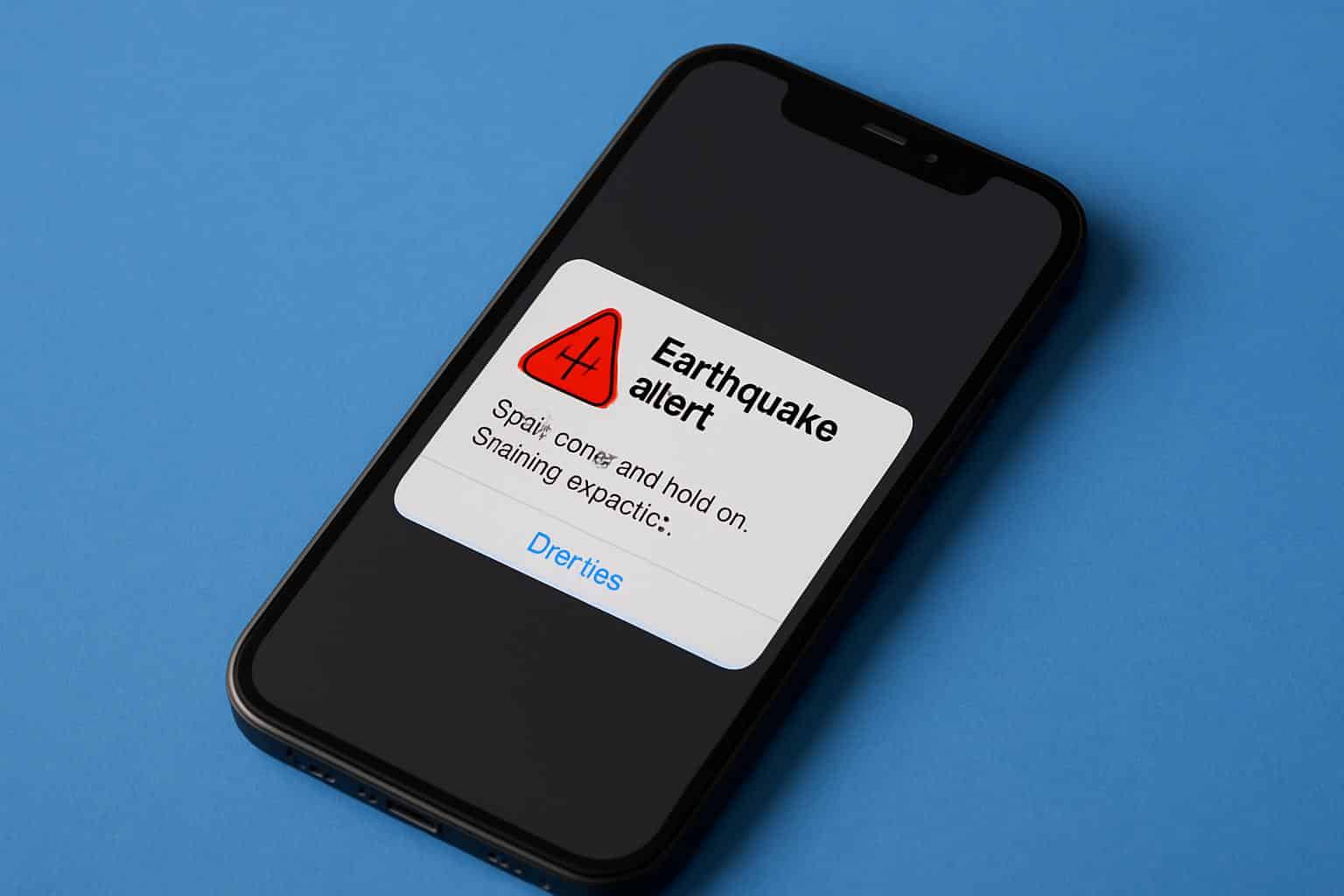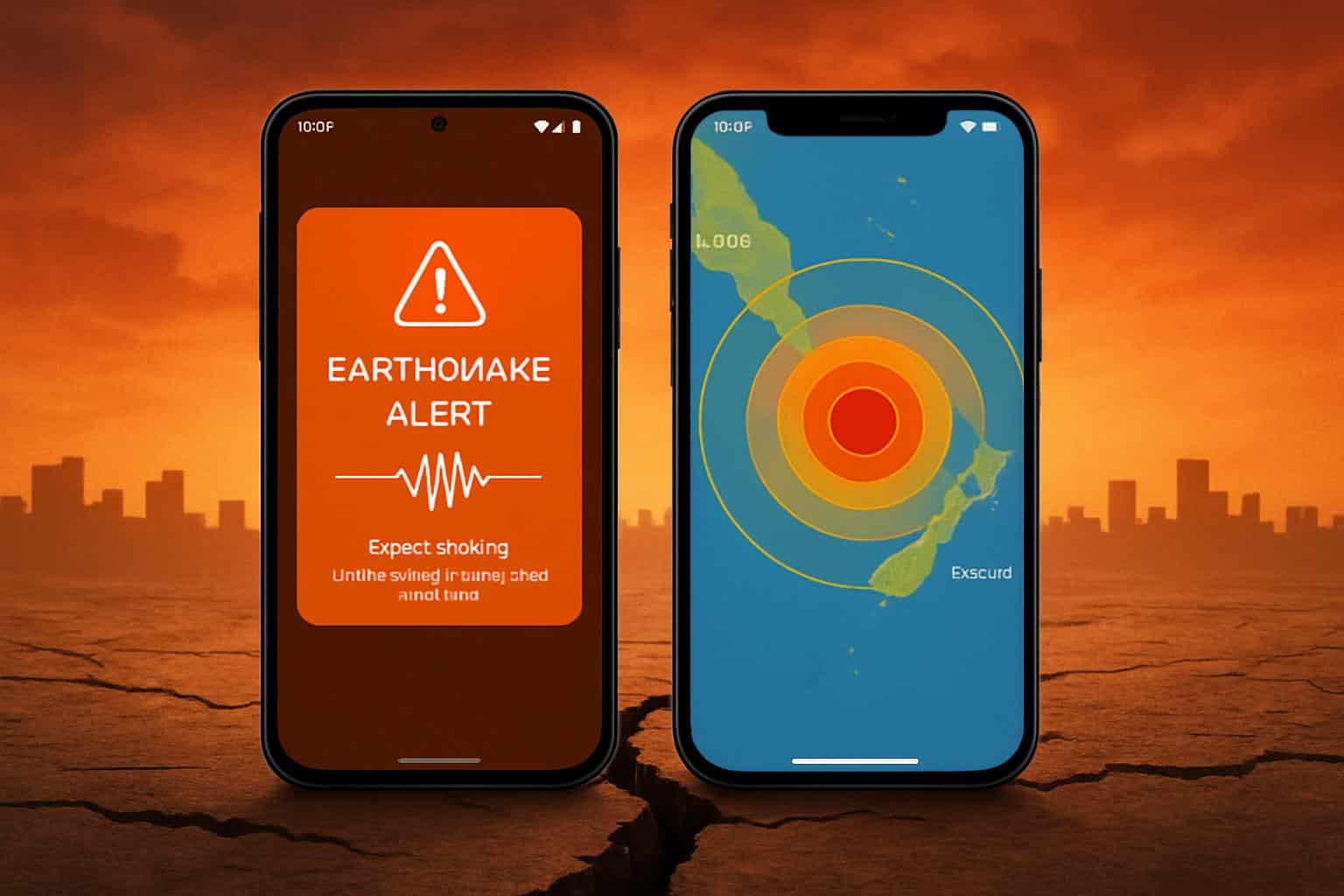Android’s built-in earthquake alerts will soon work in countries beyond the U.S. — you can expect the feature to go live in Greece and New Zealand this month.
Google is experimenting with a share function for its Android Earthquake Alerts System, allowing you to send a warning instantly to friends and family — even those on an iPhone — with a message prefilled and tagged #AndroidEarthquakeAlerts.
- How Android detects earthquakes and early shaking waves
- Why cross-platform sharing matters for earthquake alerts
- What the new Android alert sharing feature may look like
- Reliability and privacy considerations for alerts
- How to prepare now for Android earthquake alerts
- The bottom line on Android and cross-platform alerts

The feature came to light in code for recent Google Play Services, suggesting a more elegant way of passing on real-time alerts through Messages and social apps. It is based on a project started in 2020 and expanded to the entire United States and six territories in 2024, turning millions of Android smartphones into a distributed network of seismic sensors.
How Android detects earthquakes and early shaking waves
Google’s system listens for the first vibrations using phone accelerometers to identify P-waves, the fast-moving, weaker waves that arrive before stronger shaking. When a lot of devices nearby report identical movement at the same time, Google’s servers are able to triangulate that data to estimate the epicenter and intensity of the shaking, then send an alert — or not — to people who are likely to experience stronger S-waves in the next few seconds.
In supported areas, Android works with information from seismic partners like the United States Geological Survey and the ShakeAlert network on the West Coast to further increase speed and accuracy. The alerts are divided into two tiers: a quieter “Be Aware” notice for light shaking; and a louder “Take Action” warning that comes with simple guidance, such as Drop, Cover and Hold On, along with follow-up actions after the shaking stops.
Why cross-platform sharing matters for earthquake alerts
When the earth moves, seconds make a difference. USGS guidance says that even 5 to 20 seconds’ notice can be sufficient time to dive under a sturdy table, move away from hazards or cease operation of machinery. In both Japan and Mexico, early warning systems trigger the halting of trains and closure of valves before destructive waves arrive, reducing injuries and cascading consequences.
(iPhones already get government Wireless Emergency Alerts where they are available, including ShakeAlert-powered messages in California, Oregon and Washington — but the coverage, delivery pathways and timing will vary by country and carrier. A fast, human-triggered share from an Android alert could help expand that reach across group chats and social feeds, particularly in areas without strong public early warning or during rapidly developing aftershock sequences.)
What the new Android alert sharing feature may look like
The work-in-progress option sits as a share button on the alert screen. Tapping it creates a short, preloaded message about the alert that’s ready to send and includes the #AndroidEarthquakeAlerts tag. From there, you choose a channel — text, RCS or social chat app — and put the warning in front of people that might not look at the Android notification.

The hashtag is not entirely for show; it enables emergency communicators and the public to rapidly find on-the-ground reports, and to wrap context around them — much in the way that official agencies track event-specific tags during hurricanes or wildfires. And, as always, stop sharing unverified damage claims and wait for local emergency management instructions.
Reliability and privacy considerations for alerts
No early-warning system works perfectly. Crowd-based sensing can misinterpret non-seismic vibrations on occasion, and fast-moving earthquakes sometimes outrun any alert. Nonetheless, its real-world performance has been promising: during the 5.9 magnitude earthquake near Melbourne in 2021, many Android users received a few seconds’ worth of notice; other events have led to post-mortems that improved detection models.
Google says the system relies on anonymized, aggregated signals and coarse location from participating devices only to identify earthquakes. You can also review or change permissions in system settings, and you may disable alerts if you wish. Like all safety features, the more people use it, the better; as more opt in, busy parking garages will become areas with high sensor density for earlier and more confident early warning.
How to prepare now for Android earthquake alerts
On many Android phones, go to Settings > Safety and Emergency (or Location) and make sure Earthquake Alerts are on. Keep Google Play Services up to date, permit motion sensors, and maybe even have emergency alerts override Do Not Disturb. If you depend on a wearable, turn on mirrored notifications for important alerts.
Prepare your next steps in advance: know safe places at home and at work, secure heavy furniture, practice Drop, Cover, and Hold On. Search for information on reliable sources, including a regional ShakeAlert partner like the Pacific Northwest Seismic Network and local emergency management office, after an event.
The bottom line on Android and cross-platform alerts
Shareable Android earthquake alerts wouldn’t substitute for government warnings, but they could serve as a faster human amplifier — a way to deliver life-or-death seconds of warning to iPhone users and anyone else in your network. If the upstart feature ships as planned, your phone might be able to moonlight as a personal safety beacon when it matters most.

